

Oswald was a success! At least more of a success than the imaginative Walt Disney had ever managed before. In Hollywood, Walt Disney Studio and its crew were pumping out animations featuring Oswald the Lucky Rabbit. With the help of his distributor, Charles Mintz, Disney’s short cartoons ran in theaters for Universal Pictures. But Oswald’s fame did not come with fortune. Struggling, like he always had, to finance his business, Walt and his wife Lillian hopped on a train to New York in hopes of convincing Mintz to up the company’s pay. After all, Mintz was drafting a new contract for Oswald animations, but it did not include Disney.1
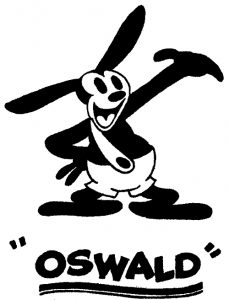
Some of Disney’s animators were tired of dealing with Walt’s stubborn perfectionism.2 Charles Mintz was fed up with Walt begging for money. But he also owned the rights to the character Oswald the Lucky Rabbit. So, as February turned to March in 1928, the two parties made a deal. The mutinous artists agreed to continue creating Oswald cartoons under Mintz himself, severing Disney from the process. Upon meeting with Walt, Mintz proposed a contract that would cut the studio’s funds in half. Walt was shocked. He was barely making quality cartoons with his current budget. This contract was impossible to agree to—just as Mintz designed it. Backed into a corner, Walt cut ties with Mintz. He not only lost almost all of his crew, but his prized character, too. Even in this dire situation, Walt sent an optimistic telegram to his brother and business partner Roy that read, “EVERYTHING OK WILL GIVE DETAILS WHEN ARRIVE.” Walt boarded his train home with a new sense of motivation. Vowing to never work for anybody ever again, he decided that, this time, he would maintain creative control over his characters. This time, he would make a name for himself. This time, he would become an animation legend.3
Walt wasted no time. While heading back to California, he was already brainstorming. Soon he had an “Aha” moment. He laid out his idea for Lillian, his wife, and had her imagine a mouse: Mortimer Mouse. Lillian, who approved of the idea but not the name, suggested Walt call the mouse “Mickey” instead. Once back in Hollywood, he brought his creation to his star animator, Ub Iwerks, whom he had known since his days drawing cartoons in Kansas City. After deciding to base Mickey Mouse’s first animation on Charles Lindbergh’s flight across the Atlantic the previous summer, Ub got to sketching. Creating about 700 drawings by himself, Ub finished sketching the first Mickey reel, entitled Plane Crazy, in just two weeks. Since Disney still needed to fulfill his last contract with Mintz, he assigned the disloyal animators to finish the production of their Oswald animations. To protect against another Disney character from being stolen, Disney’s family helped him secretly ink animation cels in his garage so that Walt’s cameraman could photograph them at the studio after everyone else had gone home for the night. All finishing touches were complete by May 15, just a few weeks after the defecting artists left. Then, Walt, armed with charm and selling experience, set out to find a distributor for Mickey Mouse.4
Walt showed his animation to multiple theaters and even to Metro Pictures, but no one seemed interested. Since Walt was not compensated for Plane Crazy, he started working on the second Mickey animation, Gallopin’ Gaucho, in hopes of making money off of that one, money that he desperately needed to keep his company afloat.5 The question was: How could Disney make Mickey Mouse stand out? If Mickey was just like every other animated character, he wouldn’t be marketable enough to save Walt Disney Studios.6 Luckily, Walt was always trying to push the boundaries of his art. In Disney’s previous cartoon ventures, including his Alice Comedies and Oswald animations, Walt struggled to please distributors and make artwork he was proud of. While his distributors wanted cartoons filled with back-to-back gags, Walt wanted to focus on the quality of his animations and to create characters with distinct personalities.7 But he did not stop there. While production of Gallopin’ Gaucho was underway, Walt thought up his best idea yet: animation but with sound.8
At the end of May in 1928, Disney’s crew, eager to start experimenting with sound, sped through the production of the silent Gallopin’ Gaucho and quickly began the animation of Mickey’s third film—Steamboat Willie. But they had to figure out how to synchronize sound and animation first. The first movie with sound, The Jazz Singer, had only been released less than a year before. Although many people in the animation industry were interested in the introduction of sound, there was no clear, easy-to-follow path to get there. Disney, needing to strike gold, would have to pioneer sound animation, and he hoped that he was the first to get it right. Luckily, he had the help of young crewmember Wilfred Jackson. Jackson was one of the only musically inclined members of Walt Disney Studios and he suggested that a metronome be used to determine how many frames of film were contained in a beat of music. Jackson then created what he called a “dope sheet,” which was essentially a sheet of music divided into measures with a description of the cartoon actions executed under its respective measure. With this pacing guide, Disney was ready for a trial run. As darkness fell in late June, he set up a bedsheet and a projector in his office and invited the crew over. They took turns watching the animation of Steamboat Willie while the other crewmembers played the musical accompaniment and provided sound effects. Excited over their success, this performance lasted for hours. But this was not sufficient. Disney and his animators could not create live sound effects for every Mickey cartoon at every theater showing in the nation. Somehow, Disney would have to scrape up enough money to instill sound on physical film.9
Walt was adamant that a movie’s sound should not be recorded on its own disc, but on the picture film itself. Because this technology was so costly in California, Disney invested in another trip across the country to New York.10 After arriving on September 4, he met with company after company waiting to be sold on the recording device that would, he hoped, shake up the animation industry. He was soon dazzled by a man who had the exact device he was looking for. Pat A. Powers’ “Cinephone” was able to mark optical impulses on film that could then be read by a projector and transmitted as sound. Unimpressed by the other methods he had seen, Disney made a deal with Powers that he believed would cost $1000. This money would go towards compensating Powers, securing musicians, and paying royalties. For a young man who had already run two personal cartoon studios out of business, this was a risky leap. Nevertheless, Walt urged his brother Roy to deposit at least $500 in the Walt Disney Studio bank account in order to cover the down payment for the Cinephone.11
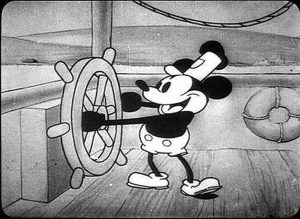
On September 15, Disney sat in a small studio ready to record the score and sound effects for Steamboat Willie. Even with an orchestra, a conductor, and Pat Powers on deck, it was very obvious that the use of the Cinephone for animation was an unmastered art. The recording session was a disaster. Take after take was ruined by overwhelming instruments, sound effect mishaps, and a surplus of orchestral motifs (the conductor did not want to be restrained to what he surely believed was a childish accompaniment). Despite the fact that the musicians were provided with film that precisely marked the tempo, the conductor could never get the orchestra to play in time. Worse than that, since he was paying by the hour, as the hours stretched on, so did Disney’s bill. Walt needed another crack at a Steamboat Willie recording session, but he had a few wrinkles to straighten out first. A second session would only be possible if Walt could get hold of enough money. If Disney was going to make a risky move, the time was now. He knew that this film had to be of the upmost quality in order to succeed. So, hanging onto the hope that this film would be prosperous, Walt resorted to taking out a bank loan. The other glaring issue was that Disney needed a better system to keep his musicians in tempo. In the two weeks before the second recording session was scheduled, Disney figured it out. He animated a ball that rose and fell, clacking like a metronome as it did. He synchronized the ball to the animation and the sheet music so that the musicians could reference all three tools at once. The next recording session, which took place on September 30, was a success and it only took three hours from start to finish. Disney now had one of the first sound animations in his possession. He just had to complete the one task he never had great luck in: securing a distributor.12
But this time, Walt had the wisdom of the man who provided him the Cinephone, Pat Powers. Having a well-known name in the industry, Walt figured that Powers could help the company screen Steamboat Willie for the big players at Universal and Metro. And he did. Powers lined up a meeting with executives at Universal Studios where Walt could show them his first animation with sound. They previously enjoyed his work (Universal distributed the Oswald the Lucky Rabbit animations), and Walt hoped he could astonish them even more now. As the film rolled in the screening room, the Universal executives were cracking up at the gags, impressed by the quality, and mind-blown by the sound synchronization. The meeting went so well that Walt made a deal with Pat Powers, making him the sales agent for Walt Disney Studio for a percentage of the revenues. Walt returned to Universal the next day to bargain for a contract. Universal wanted to run Steamboat Willie before one of their new releases in order to test the public’s opinion of Walt’s work. Upon good reception, they would ask Walt to sign a contract requiring him to make them 26 animations in 1928 and 52 in 1929. Disney walked out enthusiastic, but, later, he grew worried. If Universal didn’t end up offering him a contract, Walt would need to look into other distributors. But if Steamboat Willie had already been made public, would other distributors even be interested? Walt was not sure, but he did not want to take any chances. So, he backed out of his most promising deal.13
Disney found another opportunity in a man named Harry Reichenbach. When Disney went on a screening tour around New York to exhibit his newest animation, Reichenbach was present and impressed. The two met and discussed Walt’s struggles. He didn’t want to make another dire step. This was the closest Disney had ever been to becoming a major success, and he felt like this one decision could make or break his career. Reichenbach offered to show Steamboat Willie at his theater, the Colony Theater on Broadway. He informed Disney that distributors needed to see the public’s reaction in order to put forth a contract, so showcasing his work would help his chances. Walt and Reichenbach agreed to show the Mickey on November 18, 1928 and the weeks to follow. Thankfully, Disney would get paid $1,000 for this showing, but that wouldn’t be enough to keep Walt Disney Studios running. With the money he borrowed to build his studio, the loans he took out for the Cinephone recording, and the production costs, Walt had a gigantic debt to pay. If the unveiling of Steamboat Willie failed, Walt would have to put away his animation dreams just to make enough money to live. This was his last shot.14
The lights dimmed at Colony Theater. The six-minute-long Steamboat Willie projected onto the screen while Walt sat anxiously in the crowd. He heard a giggle. Then a knee-slap. Then an eruption of laughter from the entire audience. The audience loved it! The reaction was exactly what Walt had hoped for. He had feared the addition of sound might break the animated wonderland he had meticulously crafted, but it only drew in audiences even more!15 They were not just captivated by the novelty, but by Disney’s ability to seamlessly mesh sound and animation. It was obvious that the two were planned in unison. He wasn’t merely adding sound to animation. He was pursuing a revolution of art in which sound and animation were inseparable. Soon offers rolled in. The distributors were sold! A little too well actually.16
Distributors saw so much potential in Disney’s creations that they wanted to buy Walt Disney Studios itself. Then these companies would only have to instruct the studio what to produce, and they would have applauded animations for decades to come. But for Walt, these prospects were unacceptable. He remembered back to his days packing animations with jokes rather than focusing on storytelling because his distributors commanded it of him. The memory of losing Oswald the Lucky Rabbit struck him once again. Walt was not willing to give up creative control. He promised himself, after losing Oswald, that from then on, only he would be his own boss. So, he declined the offers that he had striven for.17
But not all was lost. Thanks to the showings at Colony Theater, Walt knew that audiences wanted to see more Mickey. He knew there was demand. And so did his sales agent Pat Powers. Pat, who had already gifted Walt with the Cinephone and connections, offered yet another hand of help to Walt in December 1928. Instead of working with the giant distributors like Universal and Metro, it was possible to sign a contract with smaller state distributors allowing them to show a piece of work in exchange for some of the profits. Since Pat had established relationships in the film industry, he would have no trouble setting these kinds of agreements up for Disney. Walt couldn’t say no. He would retain the authority to create whatever his heart desired. He would not have to worry about distributors limiting his funds. Walt would no longer be running from office to office in hopes of hooking a company on his animations. Now these companies would be running to him.18
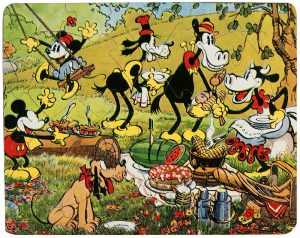
And they obviously had much reason to. Mickey fanatics across the country were organizing into Mickey Mouse Clubs by the following January. Fans would meet in theaters, watch Mickey cartoons, play games, and buy Mickey merchandise. It was a Mickey Mouse paradise. This was not just great advertising for the beloved animations. It also provided some income for Disney as theaters had to pay for a special license to display Disney’s films for these events. Walt was also able to satisfy Mickey-lovers with a cartoon strip in newspapers, one of his long-standing dreams. For this, Walt focused on the storyline and had his crew at the studio work on the drawing aspect. These strips spread to newspapers in 22 countries and swept in $1,500 a month for the studio. Still, Walt was trying to reach new heights. He was extremely involved in the manufacturing of Mickey Mouse dolls, he had a contact for a comic book in the works, and he attempted to sell companies on the idea of a Mickey Mouse chocolate bar. There was definitely a fan-base for Walt’s mouse, which would only grow in years to come, allowing Walt to keep creating.19
Walt would not see a gigantic financial breakthrough for nine more years, although the success of Mickey helped him distance the company from the likelihood of bankruptcy. He did, however, achieve a huge creative breakthrough, not just personally, but for the entire industry. Sound animation, as we know it today, would become the standard. The hours of trial and error that Disney endured introduced a process for synchronizing animation and sound in a compelling way that has resulted in decades of beloved animations. Walt Disney Studio’s ups and downs had not yet run out, but neither had their grit. Or imagination. One thing is for sure. Even as he basked in his recently gained notoriety, Walt was already planning. Walt was already making. Walt was already thinking 10 steps ahead as to how he would revolutionize the animation industry next.20
- Neal Gabler, Walt Disney : The Triumph of the American Imagination, 1st Vintage Books ed. (Vintage Books, 2007), 106. ↵
- Neal Gabler, Walt Disney : The Triumph of the American Imagination, 1st Vintage Books ed. (Vintage Books, 2007), 100-101. ↵
- Timothy S. Susanin, Walt before Mickey : Disney’s Early Years, 1919-1928 (University Press of Mississippi, 2011), 174-177. ↵
- Russell Merritt and J. B. Kaufman, Walt in Wonderland : The Silent Films of Walt Disney, Rev. English ed. (Giornate del Cinema Muto, 1993), 120-121. ↵
- Neal Gabler, Walt Disney : The Triumph of the American Imagination, 1st Vintage Books ed. (Vintage Books, 2007), 116. ↵
- Steve Hanson, “Disney (Walt Disney Company),” in St. James Encyclopedia of Popular Culture, ed. Thomas Riggs, 2nd ed., vol. 2 (Detroit, MI: St. James Press, 2013), 126–29. ↵
- Russell Merritt and J. B. Kaufman, Walt in Wonderland : The Silent Films of Walt Disney, Rev. English ed. (Giornate del Cinema Muto, 1993), 15-16. ↵
- Neal Gabler, Walt Disney : The Triumph of the American Imagination, 1st Vintage Books ed. (Vintage Books, 2007), 116. ↵
- Neal Gabler, Walt Disney : The Triumph of the American Imagination, 1st Vintage Books ed. (Vintage Books, 2007), 118-119. ↵
- Linda J. Obalil, “Steamboat Willie,” in International Dictionary of Films and Filmmakers, ed. Sara Pendergast and Tom Pendergast, 4th ed., vol. 1, Films (Detroit, MI: St. James Press, 2000), 1148–49. ↵
- Neal Gabler, Walt Disney : The Triumph of the American Imagination, 1st Vintage Books ed. (Vintage Books, 2007), 120-121. ↵
- Neal Gabler, Walt Disney : The Triumph of the American Imagination, 1st Vintage Books ed. (Vintage Books, 2007), 122-123. ↵
- Neal Gabler, Walt Disney : The Triumph of the American Imagination, 1st Vintage Books ed. (Vintage Books, 2007), 123. ↵
- Neal Gabler, Walt Disney : The Triumph of the American Imagination, 1st Vintage Books ed. (Vintage Books, 2007), 126. ↵
- Cynthia Rose, ed., “Steamboat Willie,” in American Decades Primary Sources, vol. 3, 1920-1929 (Detroit, MI: Gale, 2004), 55–57. ↵
- Neal Gabler, Walt Disney : The Triumph of the American Imagination, 1st Vintage Books ed. (Vintage Books, 2007), 127-128, 138-139. ↵
- Neal Gabler, Walt Disney : The Triumph of the American Imagination, 1st Vintage Books ed. (Vintage Books, 2007), 128. ↵
- Neal Gabler, Walt Disney : The Triumph of the American Imagination, 1st Vintage Books ed. (Vintage Books, 2007), 128. ↵
- Neal Gabler, Walt Disney : The Triumph of the American Imagination, 1st Vintage Books ed. (Vintage Books, 2007), 139-141. ↵
- Linda J. Obalil, “Steamboat Willie,” in International Dictionary of Films and Filmmakers, ed. Sara Pendergast and Tom Pendergast, 4th ed., vol. 1, Films (Detroit, MI: St. James Press, 2000), 1148–49. ↵
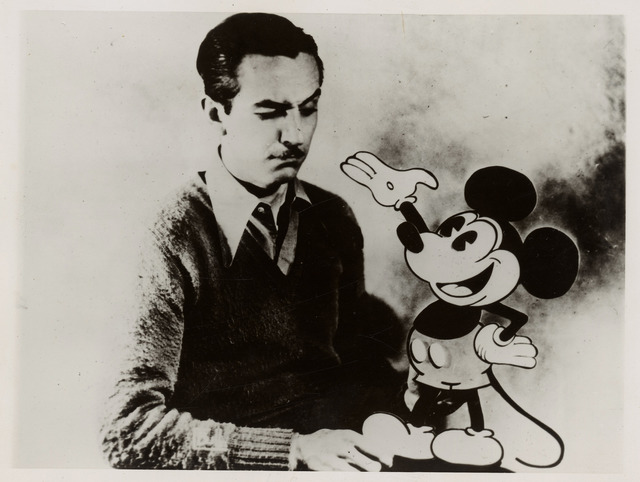

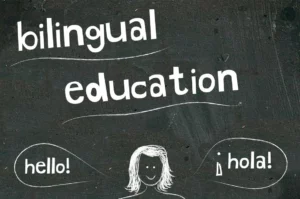

39 comments
Abbey Stiffler
I did not realize that Mickey Mouse was not the first animated character that Walt Disney created but Oswald was. He went through so many struggles as it was just to create a character and the distributor would end up stealing his characters. He was kind of stuck in this circle of disappointment until Mickey Mouse and the sound animation. I wonder if his previous distributor regretted pushing him out once he got big all on his own.
Jacob Anthony Ayala
This is a really beautifully written piece. I thought it was super interesting to hear about his struggle and all the risks he took with his projects. The story of Steamboat willie and all the risk and ingenuity that came into making it just was so awesome to read about. Even now the Steamboat willie cartoon is a staple of Disney’s. Even today they play that little short before every movie.
Bryon Haynes
This was a fantastic article to read as an animation fan. Walt’s previous failures did not deter him from following through on his ambitious vision of what animation could be at the time. Disney’s perseverance in the face of adversity is truly inspiring to those who aspire to be just as ambitious, from creating new characters on his own to employing cutting-edge technology to properly distribute these films.
Jared Sherer
Walt Disney has a big impact on a lot of people’s lives around the world. Reading your article gives insight into how Walt had to work in order to create the empire that he has created today. Thoroughly reading your article brings nothing but nostalgia and comfort for a Disney fan like me. Your writing style is dynamic and interesting. The subject matter, with the origins of Mickey Mouse and Disney magic is very engaging, as well. It is very enjoyable to read about the history of Walt Disney and how he revolutionized the animation industry, launching an empire. It is also inspiring to hear about how Walt Disney took a disappointment (some might say failure) and turned it into such a vast success, both for his business, and for the industry.
Victoria Cantu
I want to start by congratulating you on your award for your superb article, Gabriella! The details in your article and the evolution of Micky Mouse were fascinating to learn about. In addition, I loved how you also included a story of the creator Walt Disney and his struggle towards accomplishing his dream. This article was overall informative but very inspirational. Seeing how big of a legacy Walt Disney was and continues to be is motivating and shows that hard work and dedication can take one far beyond their capacity. In love with this article!
Kenneth Cruz
This was a very entertaining article to read, Gabriella! I always knew that Disney Studios had a rich and prosperous background to it but I’ve never seen anything like this. I like how you told of Walt Disney’s hardships he had with his cartoons and how he overcame them. The best part was seeing how the success of Mickey Mouse grew over time.
Kelly Arevalo
Good article! I liked how you presented the information, building the facts towards this great conflict that marked the future of the Walt Disney Company and probably the entire film industry, and how you included the background information in a way that helped us understand the story you are telling us. I liked how it was integrated with the story, if that makes sense.
Congratulations! It was an exemplary article, truly deserving of those awards.
Halie Estrada
This was amazingly written! I love Disney and all the memories it has given me throughout my childhood. One of my favorite memories from when I was little waking up extra early in the mornings before school so I could put on Mickey mouse. It’s so amazing to read about all of Walt’s ups and downs, it shows you that even the most successful people struggle the most. Reading articles like this makes me believe that anything is possible no matter how big the dream is. If you put your all into it, you can succeed in it.
Yaseth Ricardo
This was an awesome article; I loved the storyline along with the attention to detail and resources. It is incredible to think that most of our childhoods and iconic movies were created by a man who struggled so much. His dedication really motivates people to keep trying and not give up. When talent and courage meet, great things can be achieved, just like mentioned in this article. The illustrations were lovely and a real throwback to the past that really show how great and advanced were his charicatures for the time.
Emily Rodriguez
WOW! Where do I even start? This was an astonishing article to read; It’s no wonder it was awarded two awards. I loved the whole story that you told throughout this, and your ability to convey Walt as the struggling artist that he started out as. You did a great job showing Walt’s conflicts and how he overcame them. Something I did not know about, was that Walt created a different type of metronome out of an animated ball with the perfect timing and everything. That was very interesting. Overall, the article was extremely well written, captivating, informative, and told a great story!